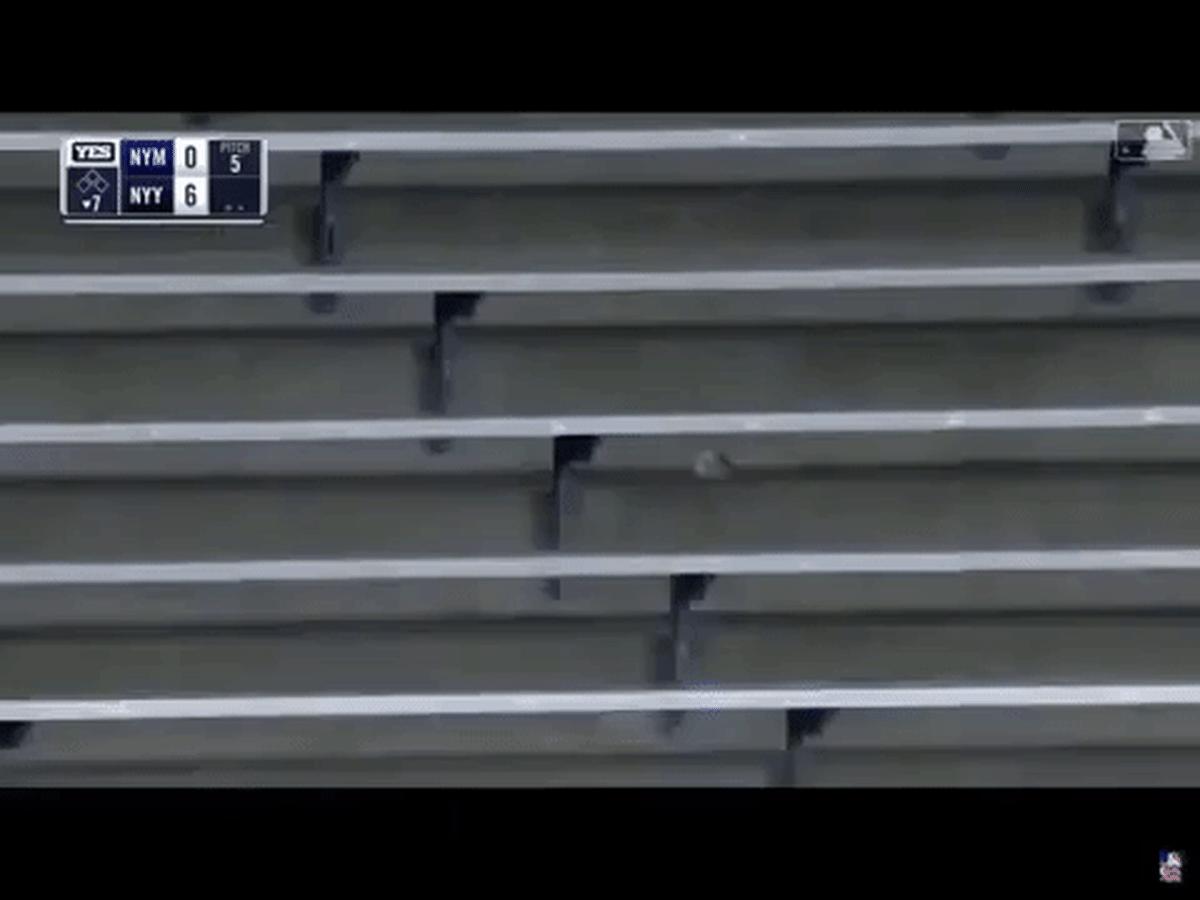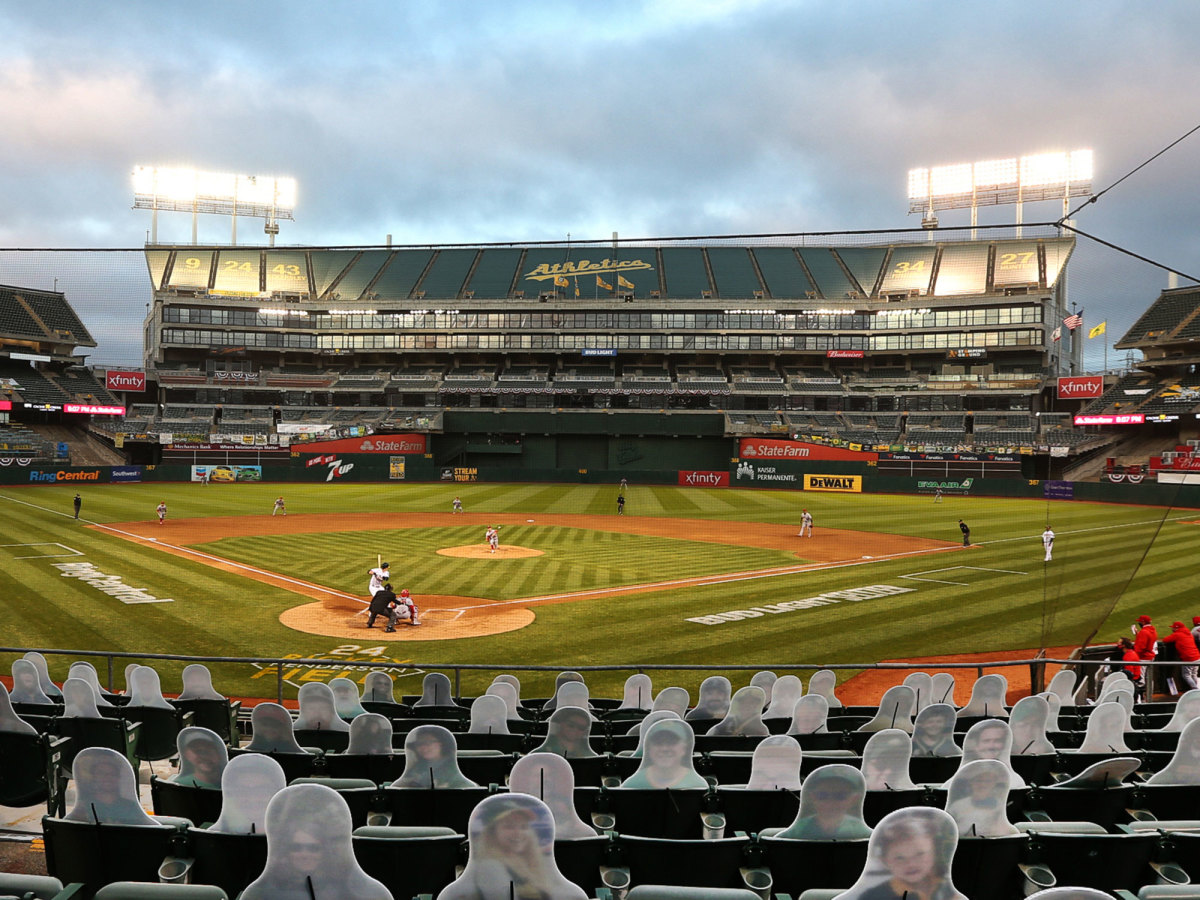With No One to Catch Them, What's Happening to Home Run Balls?
If a home run ball falls with no one to catch it, does it make a sound?
Before this season, MLB had never needed to consider home run pick-up—the crowd would catch the balls, or fight over them, or perhaps throw them back, but they’d never leave them lying in the stands. But now the stands are empty. If you see a highlight of a player going deep, odds are it will include the ball’s arrival in the deserted bleachers, where it will bounce down on its own, like a bizarrely sad game of Plinko. And so included in the many questions that baseball has had to answer for a season amid a pandemic is this: What do you do with a home run?

To watch home run shots on broadcasts, you could be forgiven for assuming that the balls are left alone, haunted relics of an unconventional season that will sit in the stands forevermore. But fear not for the baseballs. They should all be picked up, and each team has made its own call on what to do with them, trying everything from shipping them to fans to recycling them for use in practice.
For the Twins, a select group of (appropriately distanced) staff are shagging balls in the stands—“a nice way to have folks in the ballpark and involved in the game that otherwise might not be,” says team spokesperson Matt Hodson. A special home run, like a player’s first one or another milestone, will be saved and given proper treatment. Most others will be authenticated to be sold as game-used merchandise. And a few will meet the same fate as humble foul balls: picked up, disinfected, and eventually used for batting practice.
The Brewers will similarly try to authenticate most of their home runs—“if we can track them and verify which one it is,” says team spokesperson Matt Stein. (In a game with, say, five or six home runs, figuring out just which ball is which can be surprisingly tricky.) If it can’t be pinpointed definitively? Back to BP with the foul balls it is. And Milwaukee is committed to complying with the league’s health and safety protocol on this, Stein noted: Section 5.2 of the 2020 operations manual states that “baseballs utilized for batting practice should be cycled out at the end of each day and should not be reused for a minimum period of five days.” The Brewers refer to those five days as the balls’ “quarantine period.”
The choice to authenticate balls to be auctioned off or sold is a popular one: The Cardinals, Royals, Nationals, Mets, Reds, Angels, Rockies, and White Sox said that they also plan to authenticate most of their home runs. (Some of these proceeds will be directed towards the teams’ charitable foundations.) But there are other options on the table here, too. For instance, Cleveland will collect up to 10 home runs and foul balls per game to donate to local charities, and any additional balls hit into the stands will be authenticated to be sold. The Marlins will do a mix of charity donations and giveaways to fans in their membership program. The Astros will mail some home run balls to season ticket holders, give away some to other fans, and authenticate the rest. And while the Cubs don’t have an official system for gathering home runs, they’ve introduced a “Season Ticket Holder Foul Ball Program,” where the team will collect each foul ball left in the stands, find the nearest seat held by a season ticket holder, and mail the ball to him or her.

Meanwhile, for teams that have allowed people to pay for cardboard cutouts of themselves to be set in the stands, there’s a natural choice here: If a ball hits a "fan,” it’s sent to the actual fan.
The Red Sox have gone this route with their cutouts on the Green Monster—autographing the ball to send to the fan and also providing him or her with a custom jersey, a video replay of the home run, and two tickets for 2021. To ensure that each fan has a fair chance of getting hit, Boston staff will reposition the cutouts randomly before each home game. (Home runs that don’t hit the cutouts on the Green Monster will be sent to sponsors, given to season ticket holders for “fan appreciation,” or used for marketing purposes, says a team spokesperson.)
The Mariners and A’s will also distribute home runs and foul balls to the fans who are fortunate enough to have their cardboard cutouts struck by them. Oakland has gone a step further with a sponsored target: Round Table Pizza has a home run bullseye in Section 137, and if it’s hit by a home run, every fan who has a cutout will get a voucher for a free pizza.
And, of course, it never hurts to ask for the ball politely and see where it gets you.
